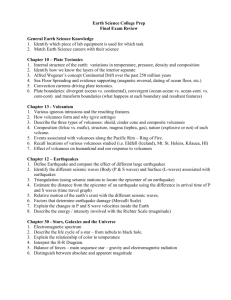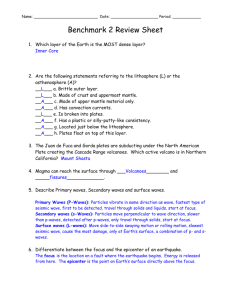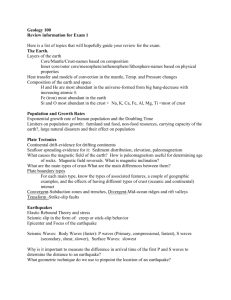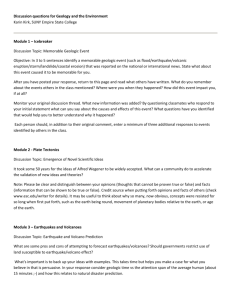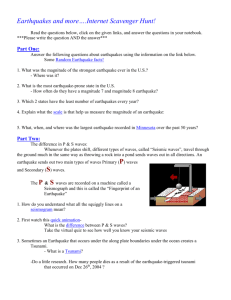Overview Chapters - PAMS-Doyle
advertisement
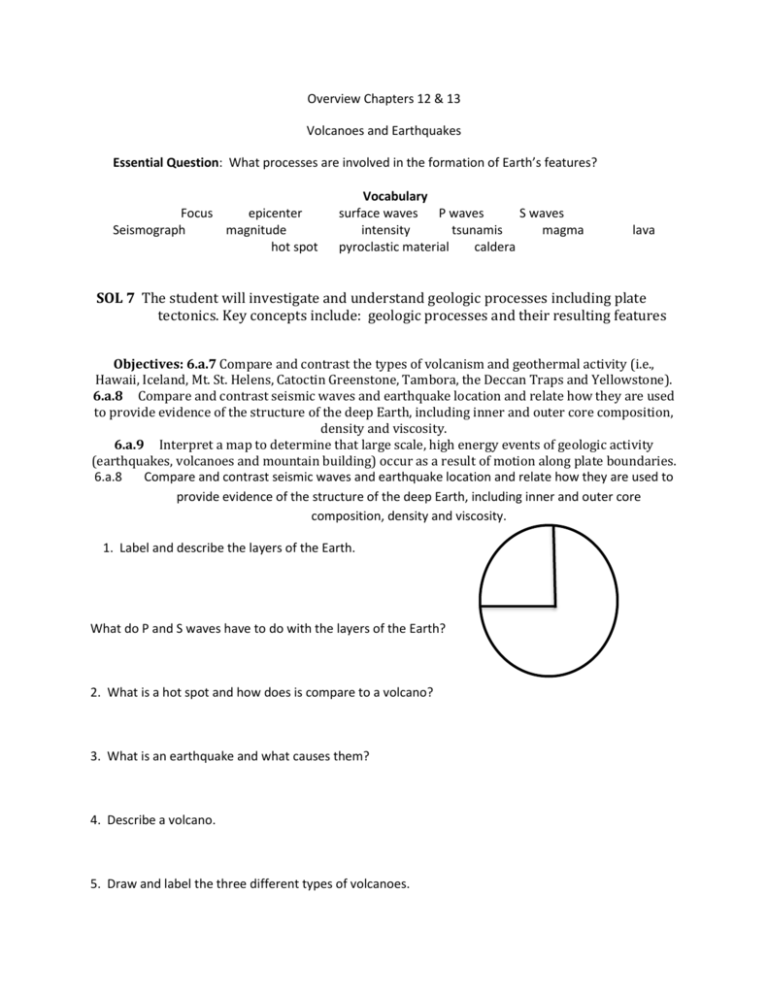
Overview Chapters 12 & 13 Volcanoes and Earthquakes Essential Question: What processes are involved in the formation of Earth’s features? Focus epicenter Seismograph magnitude hot spot Vocabulary surface waves P waves S waves intensity tsunamis magma pyroclastic material caldera lava SOL 7 The student will investigate and understand geologic processes including plate tectonics. Key concepts include: geologic processes and their resulting features Objectives: 6.a.7 Compare and contrast the types of volcanism and geothermal activity (i.e., Hawaii, Iceland, Mt. St. Helens, Catoctin Greenstone, Tambora, the Deccan Traps and Yellowstone). 6.a.8 Compare and contrast seismic waves and earthquake location and relate how they are used to provide evidence of the structure of the deep Earth, including inner and outer core composition, density and viscosity. 6.a.9 Interpret a map to determine that large scale, high energy events of geologic activity (earthquakes, volcanoes and mountain building) occur as a result of motion along plate boundaries. 6.a.8 Compare and contrast seismic waves and earthquake location and relate how they are used to provide evidence of the structure of the deep Earth, including inner and outer core composition, density and viscosity. 1. Label and describe the layers of the Earth. What do P and S waves have to do with the layers of the Earth? 2. What is a hot spot and how does is compare to a volcano? 3. What is an earthquake and what causes them? 4. Describe a volcano. 5. Draw and label the three different types of volcanoes. 6. Compare and contrast how the 3 types of volcanoes erupt and form. 7. What are the impacts that volcanoes and earthquakes cause? 8. What is the difference between a P-wave, S-wave, and an L-wave? 9. How is the location of an earthquake determined? 10. What is the focus and epicenter of an earthquake? 11. Label the parts B, C, E, and F on the diagram below.




